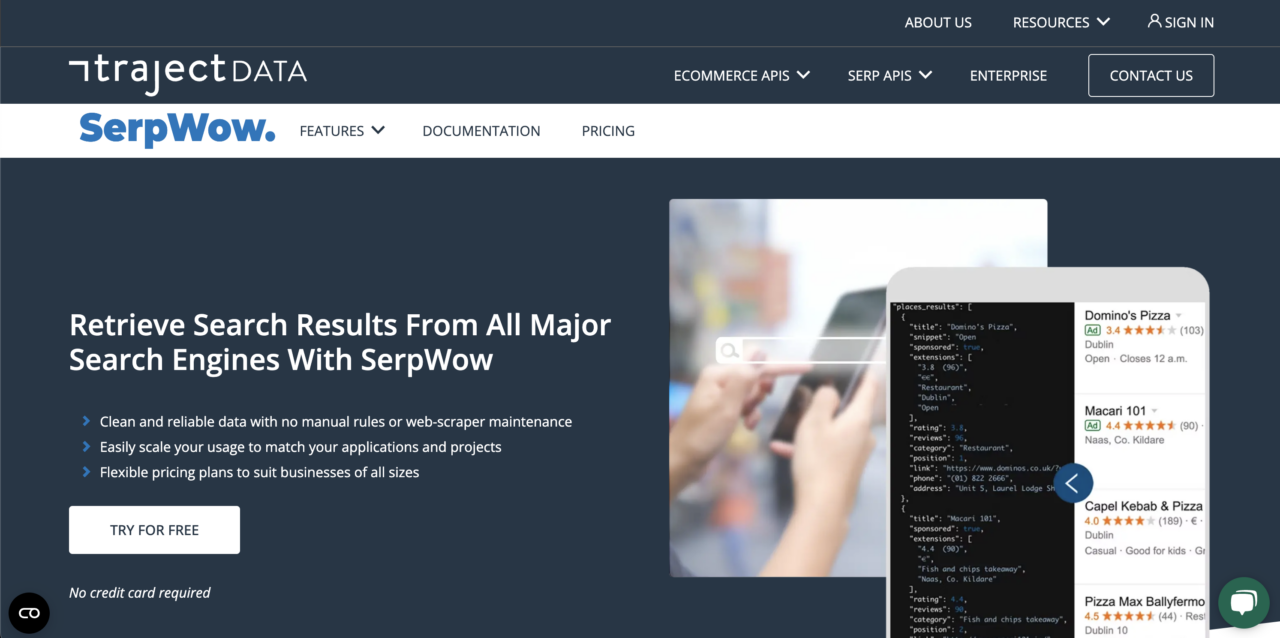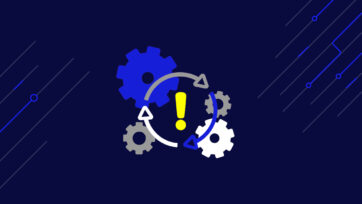Google Scholar is the definitive source for academic research, yet accessing its vast data requires specialized tools. Google offers no official API, but powerful third-party Google Scholar APIs enable large-scale data extraction. This guide compares the 8 leading APIs, analyzing features, reliability, pricing, and ideal use cases for researchers, data scientists, and academic institutions needing efficient access to scholarly data. Learn how to unlock insights from millions of research papers.
Why Use a Google Scholar API? Research Applications & Benefits
The scraped data from Google Scholar (scholar.google.com) can be used for a variety of purposes. This information is particularly valuable for academic, research, and professional endeavors. Here are some key applications of Google Scholar data:
- Review and research: find relevant papers, articles, theses, and books for academic research or projects. Compare different methodologies and theoretical frameworks from related searches.
- Academic analysis: identify emerging trends and topics in academic publications, and calculate academic metrics like the H-index and citation counts.
- Potential collaborations: identify experts and their affiliations in specific fields for potential collaborations, conferences, or peer reviews.
- Product development: professionals in R&D can extract data into tools like Google Sheets to conduct thorough research, make breakthroughs, and track their competitors’ publications in relevant scientific or technological areas.
Now that you understand the potential applications of aggregated Google Scholar data, let’s delve into the leading web scraping tools and APIs that can help you efficiently extract Google Scholar.
Related: Do you also often scrape Google images? Discover the 10 Best Google Image Search APIs based on their key features and prices.
1. ScraperAPI: Reliable Google Scholar Data at Scale
ScraperAPI is the first option on our list of Google Scholar APIs. This proxy API simplifies large-scale web scraping, making it ideal for difficult-to-scrape websites like Google. It eliminates the hassle of building and maintaining your own infrastructure. Simply send the URL you want to scrape to the API, and it will handle rotating proxies, automatic retries, CAPTCHAs, and blocks, delivering only successful organic results using its machine-learning learning algorithm. Your script then parses the required data from the HTML response.
By combining ScraperAPI with a prebuilt Google Scholar scraping library like Scholarly, you can quickly create a custom Google Scholar API tailored to your specific data needs in just a few hours. This significantly streamlines the Google Scholar scraping process.
This approach offers several advantages:
- Reliability: It’s highly reliable for extracting data from Google Scholar.
- Cost-effective: It’s very affordable, especially at scale. For just $49 per month, you get 100,000 API credits. Need more API credits to scrape Google Scholar data? ScraperAPI also offers plans for scraping tens of millions of pages monthly.
Overall, this combination provides a convenient and efficient solution for accessing Google Scholar data.
You can try out ScraperAPIs very generous free trial with 5,000 free requests here.
Pros
By far the cheapest web scraping option on this list for those who want to reliably extract Google Scholar data for their research projects. Plus, a very generous free plan.
Cons
You need a basic understanding of web scraping. But don’t worry, we’ll guide you through the process step by step. You can start from our Web Scraping Learning Hub.
Related: Unsure about the legality of web scraping? Read this ‘Is Web Scraping Legal?’ guide to understand its limitations and avoid legal issues.
2. SERP API
SerpApi is another viable option for those seeking Google Scholar data without building their own web scrapers.
The SerpApi team has developed a specialized Google Scholar API that returns comprehensive number of results, including titles, links, snippets, cited_by, publications, and more.
However, cost is a potential drawback. Plans start at $75 for 5,000 searches and increase to $275 for 30,000 API calls. This can be expensive if you require a large amount of Google Scholar data.
Pros
High-quality and user-friendly Google Scholar API that provides essential information.
Cons
SerpApi can be costly for large-scale projects, and may not be fully customizable to meet specific project requirements.
3. SerpWow
SerpWow is another company offering a third-party Google Scholar API. While not as extensively documented as SERP API’s Google Scholar API, it provides similar functionality at a slightly lower cost.
To use SerpWow, simply send your search query to their API, and they will return all the Google Scholar results in JSON format.
With plans starting at $120 for 10,000 API calls, SerpWow is a great option if you need a quick and easy way to extract some Google Scholar data. However, like the other API solutions on this list, it can become expensive for larger volumes of data – 250,000 API calls cost $1,200 per month.
Pros
Returns data in JSON format and is slightly cheaper than SERP API.
Cons
There is no dedicated Google Scholar documentation, and it is very expensive at scale.
4. Scale SERP
Scale SERP is another option for accessing Google Scholar data through an API. While it resembles SerpWow, Scale SERP offers a similar product at a lower cost.
Pricing plans start at $59 per month for 10,000 searches and extend to $599 per month for 250,000 searches, making Scale SERP suitable for various needs.
Like SerpWow and SERP API, Scale SERP returns data in JSON format. However, its data is less detailed, focusing on key elements like title, link, Google Scholar author, and snippet while omitting information such as the Google Scholar cite, inline_links.
Pros
The cheapest Google Scholar on the list, but still at least three times more expensive than ScraperAPI.
Cons
It doesn’t return as detailed data as the other APIs and isn’t customizable.
5. Scrapingdog
Scrapingdog, now in collaboration with Serpdog, offers a comprehensive web scraping tool that includes a Google API option. It helps you circumvent Google’s anti-bot measures by using headless Chrome to render pages and rotating proxies to avoid rate limits.
Paid plans start at $40 per month for 200,000 request credits and increase to $500+ for over 8,000,000 request credits. You can try the Google API for free for 30 days (limited to 1,000 request credits) before committing to a paid plan.
Related: What are the best Google SERP APIs? We analyze the seven best Google SERP APIs, free and paid, to help you make the right decisions.
Pros
Reliable data scraping performance with over 90% success rate.
Cons
One reviewer shared that the Lite plan, the lowest tier of the paid plan, does not support JavaScript rendering. If you require this feature, you’ll need to upgrade to a higher-tier plan.
6. Apify
Apify‘s Google Scholar API provides an efficient method for extracting research papers from Google Scholar and delivering them via an API. The web scraper utilizes pagination to collect Google Scholar citation results by navigating through web pages and scraping the search results.
You can download the extracted Google Scholar data in various formats (CSV, HTML, JSON, XLS) or directly send it to your application using an API Endpoint or API Client. Moreover, it enables seamless integration with popular third-party platforms, other web scrapers, and Google Search APIs.
Pros
Comprehensive documentation to guide you through platform setup, usage, and troubleshooting.
Cons
One reviewer noted that the platform lacks automated multiple-file downloads. Users must manually download results one at a time.
7. WebScrapingAPI
The geolocalization feature in WebScrapingAPI‘s Google Scholar API allows you to access data from google scholar profiles without location restrictions. It provides global proxies from 195 countries. Additionally, you can receive extracted Google Scholar results in a structured JSON format, eliminating the challenges of varying page layouts and streamlining the parsing process for easy integration and improved efficiency.
WebScrapingAPI’s Google API pricing ranges from $28 per month for 10,000 requests to $1,600 for 1,000,000 requests. A 7-day free trial with 100 requests is available.
Pros
Ability to combine Google web scraping activities with other Google APIs like Google Jobs API, Google Trends API, and Google Reverse Image API.
Cons
Limited documentation and frequent errors as reported by this reviewer.
8. Publish or Perish: Free Google Scholar Citation Analysis
The last on our Google Scholar API list is Publish or Perish. Publish or Perish is a specialized data extraction tool designed specifically for Google Scholar, allowing you to create your own Google Scholar API.
While slightly outdated, this open-source desktop app is ideal for researchers seeking a pre-built solution for extracting small amounts of Google Scholar data.
However, it’s important to note that the software uses your IP address to make requests to Google Scholar. This can lead to your IP address being banned by Google if you extract excessive data.
For those needing to extract more than a few hundred search results from Google Scholar, it’s highly recommended to use a proxy solution like ScraperAPI.
Pros
Completely free and easy to use.
Cons
You run the risk of getting your IP address banned if you use it without using a proxy.
What’s the Best Google Scholar API? ScraperAPI
We’ve presented eight of the leading Google Scholar API solutions to consider for your academic, research, and professional data needs.
We hope one of these top providers aligns with your Google Scholar scraping requirements. If you have further questions about ScraperAPI’s features and Google API collection, including Google SERP, Google News, and Google Shopping, feel free to contact us.
Test our powerful web scraping tool and robust API for free for 7 days. Sign up today!
Until next time, happy scraping!
Are you extracting Google data extensively? Explore these in-depth Google web scraping tutorials to create a reliable and efficient data aggregation tool.
- How to Scrape Google Search Results with Python (Easy Guide)
- How to Build a Google Jobs Scraper with Python and ScraperAPI
- How to Scrape Google Shopping with Python
Google Scholar APIs: FAQs & Key Considerations
Addressing your top questions about Google Scholar APIs, web scraping, and ScraperAPI.
1. What Is the Best Google Scholar API?
ScraperAPI is a leading Google Scholar API and all you need is an API key. Its straightforward API call delivers exceptional reliability, achieving a 99.9% success rate by effectively managing browsers, proxies, and CAPTCHAs.
To efficiently scrape even the most challenging websites, consider using ScraperAPI’s Async Scraper Service. This tool automates timeouts and retries, allowing you to scrape millions of URLs without manual intervention. It promptly returns HTML data, saving you time and effort.
2. What Factors To Consider When Choosing a Google Scholar API?
When choosing a Google Scholar API, it’s essential to consider several factors to ensure it aligns with your project needs and integrates seamlessly. Key factors include:
- Features and functionality: check if the API supports customizable search parameters/queries, allows selection of specific data formats, and offers output options that suit your requirements.
- Performance: assess how well the API performs regarding response time and data retrieval speed to confirm it can manage your workload efficiently.
- Data accuracy and quality: ensure the API retrieves the necessary data from Google Scholar and accurately extracts and formats the datasets.
- Documentation: evaluate the API’s documentation for clarity and thoroughness, ensuring it’s easy to understand and use effectively.
3. Does Google Scholar Have an Official API?
No, Google Scholar does not have an official API. To extract data from Google Scholar, you’ll need to use a third-party Google Scholar API or employ traditional web scraping techniques.












